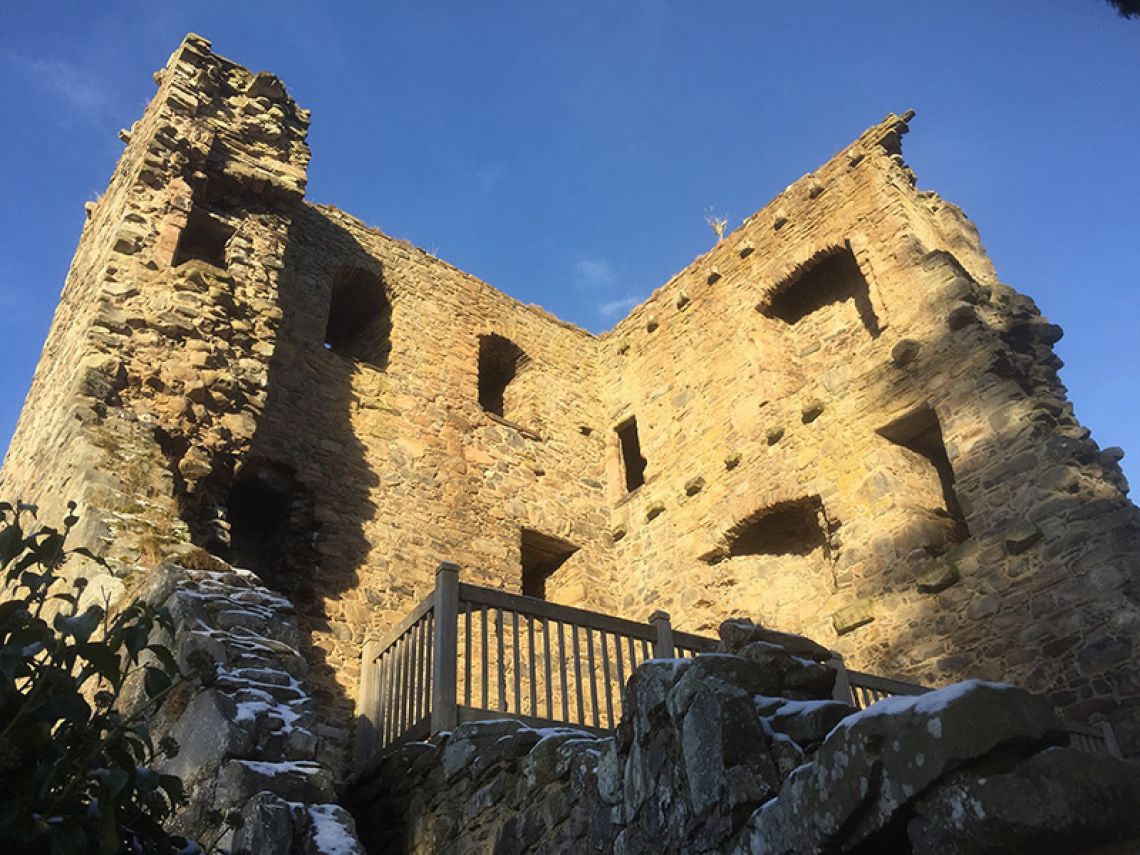Visitor Attractions
- Visitor centres
- For the Family
- Castles & Battles
- Viewpoints & Bridges
- Historic sites
- Distilleries
- Dark Skies
- All Access Mindfulness Trail
Castles & Battles

Drumin Castle
Drumin Castle, a 14th century tower house, commands a prominent, strategic position at the top of a natural embankment. It overlooks the confluence of the Rivers Livet and Avon, near the village of Glenlivet. Only two walls of this imposing Castle have survived, which was thought to have been built for Alexander Stewart, son of King Robert II, better known as the Wolf of Badenoch.
The ruins have been stabilised and access created up to and into the castle, so it's easy to explore. Access to the first floor is possible but please take care on the uneven steps. Behind the castle in the walled garden is the Glenlivet community orchard, which make a great picnic spot on a sunny day.
The castle ruins are reached by a flight of steps or a sloping grassy path both leading from the car park below. A longer walk; the Drumin circular path (2 miles/3km) can also be started from this point.
Blairfindy Castle
This fortified tower house was completed in 1564 by John Gordon of the Huntly family. In its heyday it was a fine example of an L-plan castle with three story’s and corner turret. In 1586 Blairfindy passed to the Earls of Huntly, another branch of the family, who used it as a hunting seat. A panel above the arched doorway bears the Gordon arms and this date.
In 1647 the 2nd Marquis of Huntly, a royalist, was captured at Delnabo (near Tomintoul) by parliamentary forces and imprisoned here before this trial and execution in Edinburgh.
The castle was burned by troops after the Battle of Culloden in 1746, and it was never repaired or occupied after this time. A project to stabilise Blairfindy Castle took place in 2019, funded through the Tomintoul & Glenlivet Landscape Partnership, a programme supported by the National Lottery Heritage Fund. This provides access to the castle which can be entered with care. Please do not climb on the walls. Visitors should park at The Glenlivet Distillery then follow the waymarked path half a mile to the castle. For disabled people only, there are 2 parking spaces at the castle.
Battle of Glenlivet
On the 3rd October 1594, the Catholic Earls of Huntly and Errol, commanding a force of only 1500 horsemen, defeated the much larger Protestant royalist army led by the Earl of Argyll. Records suggest Argyll's force consisted of around 6,000 -10,000 infantrymen.
Huntly's victory was partly due to his possession of six small artillery pieces, but the treachery of John Grant of Gartenberg, an ally of Argyll, must also have been a significant factor. John Grant struck a secret agreement with Huntly, and led the Grant forces away from the battle. It was a dramatic event with deep and complex roots, and the battle represented a victory of artillery and horse over regular infantry.
The site of the battle can be reached from the Battle of Glenlivet walk or from the Forestry Commission car park at Morinsh on the B9009.
Soldier stone
Close to the point where the Conglass Water joins the Avon, lies the ‘Soldier Stone’ a standing stone with the date 1690 etched into its surface. This marks the site where a soldier fell after the battle of the Haughs of Cromdale in that same year. This skirmish took place during an early period of Jacobite unrest and it was fought on May 1st 1690 under the shadow of Creagan a’Chaise on the other side of the Cromdale Hills.
More of a routing than a battle, 400 Highland Clansmen under the leadership of Colonel Cannon were killed or captured by government troops led by Sir Thomas Livingstone. Many of the clansmen fled eastwards over the hills only to collapse later from their wounds.